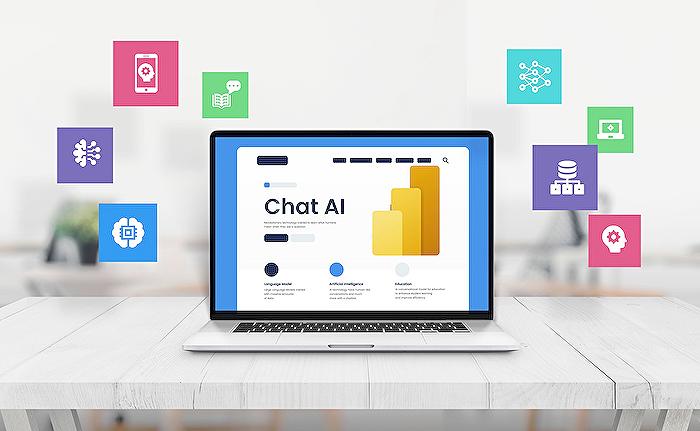- All of Microsoft

Query Power BI Semantic Models Using Semantic Link
Master Microsoft Power BI with Semantic Link: enhance data science capabilities and maximize your data-driven insights efficiently!
BI Semantic Models Using Semantic Link
The video by "Guy in a Cube" is directed towards data scientists and developers who want to use notebooks to leverage data from a Power BI semantic model (also known as a dataset). It suggests using a tool named Semantic Link (or Sempy) to facilitate data connectivity, manage semantic information, and to integrate with notebooks, a tool often used by data scientists.
Semantic Link primarily operates by bridging the gap between Power BI and the data science milieu. Data in Power BI datasets and semantic information are used by Semantic Link to enable data scientists to conduct tasks such as predictive modelling with machine learning techniques.
To establish a connection with Power BI datasets, Semantic Link provides data connectivity to the Python pandas ecosystem using the Python library, SemPy. For those conversant with Apache Spark, Semantic Link lets you access Power BI datasets through the Spark native connector that supports languages like PySpark, Spark SQL, R, and Scala.

Semantic information used in data analysis includes categories such as address and postal codes, relationships between tables, and hierarchical information present in the Power BI data. This metadata is used by Semantic Link in the data science environment to facilitate analysis and maintain data lineage.
Semantic Link also aids in suggesting built-in semantic functions, data quality validation, and augmenting data with the use of add-measures. It is a tool that enhances the use of data by business analysts in a comprehensive data science environment. Moreover, it bridges the gap between data scientists and business analysts by removing the need to reimplement business logic present in measures.
FabricDataFrame, a subclass of pandas DataFrame, is a core data structure of Semantic Link that adds metadata like semantic information and lineage. This is one of the crucial data structures that Semantic Link uses to propagate semantic information.
FabricDataFrame supports all pandas operations and more. It provides semantic functions and an add-measure method that allow you to use measures in your data science work.
In conclusion, the "Guy in a Cube" video provides an invaluable tool for tech-savvy data scientists wanting to improve their analytical work. To learn more about SemPy, the audience is encouraged to refer to the SemPy reference documentation.
- What is semantic link? learn.microsoft.com/fabric/data-science…
- Tutorial: Clean data with functional dependencies learn.microsoft.com/fabric/data-science…
- Tutorial: Extract and calculate Power BI measures from a Jupyter notebook learn.microsoft.com/fabric/data-science…
- Detect, explore, and validate functional dependencies in your data learn.microsoft.com/fabric/data-science…
- fabric Package learn.microsoft.com/python/api/semantic…
Importance of Power BI in Data Science
As an analytical tool, Power BI (Business Intelligence) is a boon to data scientists. It plays a fundamental role in the transformation, analysis, and visualization of data. Power BI's interactive visualizations, simplified data sharing, and real-time updates make it an ideal tool for in-depth analysis.
However, like other large datasets, Power BI can have some complexity in its analysis. This is where platforms such as Semantic link come into play. It gives data scientists a user-friendly framework to leverage the power of Power BI, thereby creating more efficient and accurate models.
Power BI, in particular, has in-built features that help maintain data semantics and facilitate data lineage-- a critical aspect, especially when working with vast datasets. Whether it's preserving domain knowledge about data semantics or minimizing errors, Power BI provides a streamlined approach to data analysis.

Power BI Semantic Models - What to learn?
If you are looking for ways to enhance your expertise with business intelligence tools, it is perfect to dive into learning more about the semantic model querying tool, Semantic Link. It is designed to efficiently utilize data from a well-known business intelligence platform, which is regarded as a significant resource for data scientists and developers alike. The tool, often referred to by the acronym 'Sempy,' can be pivotal in achieving your learning objectives.
To broaden your understanding of Sempy, it is essential to comprehend its fundamental objectives. One of the key aims of Sempy is to streamline data connectivity and amalgamate semantic information. This tool is designed to integrate flawlessly with common devices widely used by data analysts, such as data science notebooks. Sempy assists in maintaining domain knowledge about data semantics in a standardized format, expediting data analysis, and minimizing mistakes.

In the data flow, business intelligence tool databases that harbor data and semantic information play a crucial role. Semantic Link comes into play to bridge the gaps between business intelligence and the data science experience. This incredible tool allows you to leverage the databases in your data analysis experience to carry out tasks such as comprehensive statistical analysis and anticipatory modeling using machine learning algorithms. The result of your data science work can be stored using the cloud-based data platform, Apache Spark, and integrated into a business intelligence tool using the Direct Lake approach.
Databases from a business intelligence platform can operate as a standalone semantic model, providing a reliable source for semantic definitions. Sempy offers data connectivity to the Python pandas ecosystem via the SemPy Python library. SemPy Python library significantly simplifies the process for data scientists who are working with the data. Furthermore, Sempy can provide a route to access those databases via the Spark native connector for those data scientists who are more familiar with the Apache Spark realm. This supports various languages, making it even more flexible and user-friendly.
Working with semantic data includes categories such as address and zip code, relationships between tables, and hierarchical data found in business intelligence databases. Sempy assists in propagating this metadata into the data science experience, enabling new possibilities and maintaining data lineage. Some of the potential applications of semantic link are delivering intelligent suggestions based on built-in semantic functions, an innovative combination for augmenting data by utilizing add-measures, and providing tools for validating data quality, grounded on the relationships between tables and functional dependencies within tables.
SemPy, the potent tool, empowers data analysts to use data effectively in a comprehensive data science atmosphere. Sempy simplifies collaboration between data scientists and business analysts by removing the need for re-implementing business logic embedded in business intelligence measures.
FabricDataFrame data structure is the core of SemPy. It serves as a subclass to the pandas DataFrame, adding metadata in addition to semantic information and lineage. FabricDataFrame allows SemPy to propagate semantic information from a business intelligence platform's databases to the data science ecosystem, providing a richer experience to data scientists. Additionally, it exposes semantic functions and the add-measure method, enabling you to utilize the business intelligence measures in your data analysis work.
To further delve into the semantics of SemPy, the SemPy reference documentation can certainly be a resourceful guide. You may also explore tutorials to understand how to clean data with functional dependencies. Furthermore, understanding the validation of data with Sempy and exploring relationships in databases can also provide valuable insights
Keywords
Power BI Semantic Models, Semantic Link, Finish the Puzzle, Querying Power, BI Models Querying, Semantic Models Puzzle, Power BI Query, Semantic Link Puzzle, Querying Semantic Link, Puzzle Power BI.